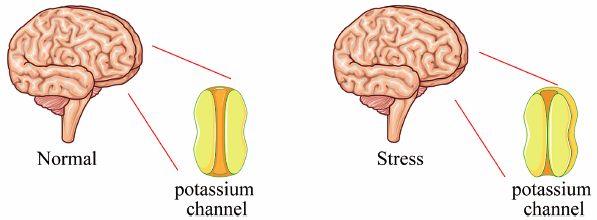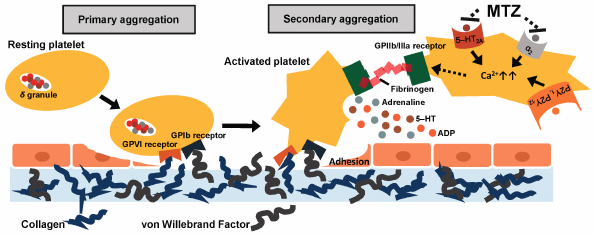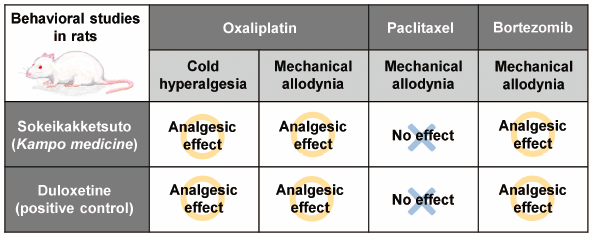- |<
- <
- 1
- >
- >|
-
2021 Volume 44 Issue 2 Pages 159-161
Published: February 01, 2021
Released on J-STAGE: February 01, 2021
Download PDF (465K) Full view HTML
-
2021 Volume 44 Issue 2 Pages 162-168
Published: February 01, 2021
Released on J-STAGE: February 01, 2021
Download PDF (1231K) Full view HTML -
2021 Volume 44 Issue 2 Pages 169-180
Published: February 01, 2021
Released on J-STAGE: February 01, 2021
Advance online publication: November 25, 2020Download PDF (6693K) Full view HTML -
 2021 Volume 44 Issue 2 Pages 181-187
2021 Volume 44 Issue 2 Pages 181-187
Published: February 01, 2021
Released on J-STAGE: February 01, 2021
Editor's pickTransient receptor potential melastatin 3 (TRPM3) is Ca2+-permeable channel that is highly expressed in the brain and activated by the neurosteroid pregnenolone sulfate (PS) and body temperature. Here, it is shown that TRPM3 was expressed in cultured rat oligodendrocyte precursor cells (OPCs) and activated by PS, resulting in extracellular Ca2+ influx. Moreover, TRPM3 expression was increased by treatment with tumor necrosis factor a. In demyelinated lesions of endothelin-1-induced ischemic rat model (lacunar infarction model), TRPM3 was upregulated in OPCs, a type of glial cells that differentiate into myelinating oligodendrocytes. These imply that TRPM3 is involved in the regulation of specific behaviors of OPCs in inflammatory pathological conditions. Scale bar shows 200 mm.
Download PDF (3841K) Full view HTML -
2021 Volume 44 Issue 2 Pages 188-196
Published: February 01, 2021
Released on J-STAGE: February 01, 2021
Download PDF (5201K) Full view HTML -
 2021 Volume 44 Issue 2 Pages 197-210
2021 Volume 44 Issue 2 Pages 197-210
Published: February 01, 2021
Released on J-STAGE: February 01, 2021
Advance online publication: December 01, 2020Editor's pickThe article by Kitabatake et al. suggested a novel mechanism of radiation resistance and radiation-induced acquisition of malignant profile in glioblastoma. Authors have shown that CD73, an enzyme that metabolizes extracellular ATP to adenosine, and activation of adenosine A2B receptor (CD73-A2B receptor pathway) are involved in radiation-induced DNA damage response, cell death, and enhancement of cell migration in A172 cells. These findings proposed that the CD73-A2B receptor pathway contributes to the resistance of the antitumor effect of radiation in glioblastoma and could be a novel molecular target to improve the efficiency of radiation therapy for glioblastoma.
Download PDF (7799K) Full view HTML -
2021 Volume 44 Issue 2 Pages 211-218
Published: February 01, 2021
Released on J-STAGE: February 01, 2021
Advance online publication: December 04, 2020Download PDF (530K) Full view HTML -
2021 Volume 44 Issue 2 Pages 219-224
Published: February 01, 2021
Released on J-STAGE: February 01, 2021
Download PDF (1189K) Full view HTML -
2021 Volume 44 Issue 2 Pages 225-231
Published: February 01, 2021
Released on J-STAGE: February 01, 2021
Download PDF (5052K) Full view HTML -
2021 Volume 44 Issue 2 Pages 232-237
Published: February 01, 2021
Released on J-STAGE: February 01, 2021
Advance online publication: December 02, 2020Download PDF (1983K) Full view HTML -
2021 Volume 44 Issue 2 Pages 238-244
Published: February 01, 2021
Released on J-STAGE: February 01, 2021
Download PDF (1178K) Full view HTML -
2021 Volume 44 Issue 2 Pages 245-250
Published: February 01, 2021
Released on J-STAGE: February 01, 2021
Download PDF (784K) Full view HTML -
 2021 Volume 44 Issue 2 Pages 251-258
2021 Volume 44 Issue 2 Pages 251-258
Published: February 01, 2021
Released on J-STAGE: February 01, 2021
Editor's pickMost of therapeutic peptides like insulin are administered parenteral because of rapid hydrolysis and enzymatic degradation after oral administration. Many techniques have been investigated for overcoming the problems and meeting the shortage of current conventional dosage forms such as iontophoresis.In this study, authors investigated if iontophoresis can be used to enhance permeation of insulin nanoparticles across the intestinal membrane and thus enhance the oral delivery of insulin.Gut iontophoresis is a promising technology that can substantially improve the transport of insulin nanoparticles across the intestinal membrane barrier.
Download PDF (3076K) Full view HTML -
2021 Volume 44 Issue 2 Pages 259-265
Published: February 01, 2021
Released on J-STAGE: February 01, 2021
Download PDF (1919K) Full view HTML -
 2021 Volume 44 Issue 2 Pages 266-270
2021 Volume 44 Issue 2 Pages 266-270
Published: February 01, 2021
Released on J-STAGE: February 01, 2021
Editor's pickAcidified extracellular pH (pHe) characterized of tumor microenvironment (TME) impairs the responses of tumors to anti-cancer chemotherapies. In this study, the authors showed that daily oral dosing of sodium potassium citrate (K/Na citrate) increased blood bicarbonate concentrations and then neutralized the tumor pHe. In addition, this tumor neutralization potentiated the therapeutic effect of anticancer agent TS-1 on Panc-1 pancreatic cancer-xenograft murine model. The authors strongly propose that the neutralization of acidic TME by oral dosing of K/Na citrate must be a smart approach for enhancing the therapeutic effects of anticancer agents for pancreatic cancer in the end stage.
Download PDF (918K) Full view HTML
-
2021 Volume 44 Issue 2 Pages 271-274
Published: February 01, 2021
Released on J-STAGE: February 01, 2021
Download PDF (620K) Full view HTML -
 2021 Volume 44 Issue 2 Pages 275-278
2021 Volume 44 Issue 2 Pages 275-278
Published: February 01, 2021
Released on J-STAGE: February 01, 2021
Editor's pickα-Defensin 5 has a particularly broad antibacterial spectrum, eliminates pathogenic microorganisms and regulates intestinal flora. There are few reports of measuring the secretory capacity of α-defensin 5 in vitro. In this study, author found Caco-2 cells, which are gastrointestinal model cells, secreted α-defensin 5 and examined the relationship between α-defensin 5 secretion and cytokines mRNA levels such as TNF-α. These results suggest that Caco-2 cells may be a simple model for screening health food components and drugs that affect α-defensin 5 secretion.
Download PDF (728K) Full view HTML -
2021 Volume 44 Issue 2 Pages 279-282
Published: February 01, 2021
Released on J-STAGE: February 01, 2021
Download PDF (2266K) Full view HTML -
2021 Volume 44 Issue 2 Pages 283-286
Published: February 01, 2021
Released on J-STAGE: February 01, 2021
Download PDF (771K) Full view HTML -
2021 Volume 44 Issue 2 Pages 287-291
Published: February 01, 2021
Released on J-STAGE: February 01, 2021
Download PDF (602K) Full view HTML
- |<
- <
- 1
- >
- >|




















